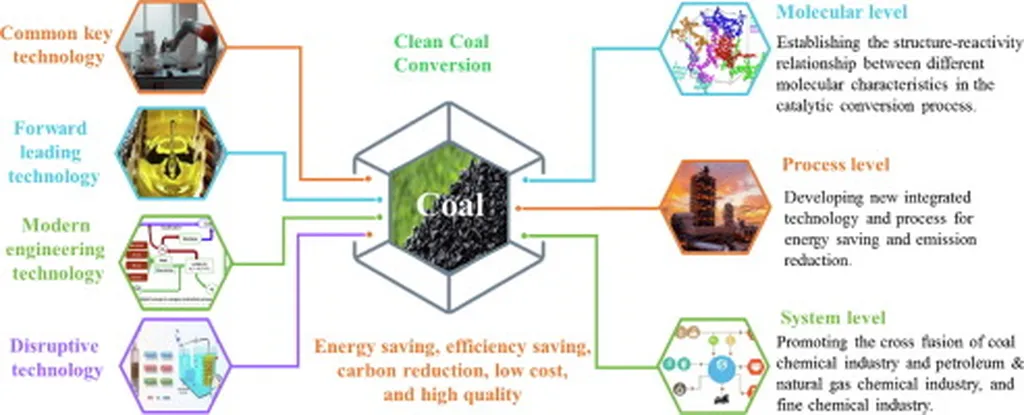In the heart of China’s quest for energy security, a groundbreaking study is illuminating the path toward more efficient coal utilization. Dr. Jiyuan Duan, leading a team at the Key Laboratory of Coal Green Exploitation and Geological Safeguard in Xi’an, has unveiled intricate details of temperature distribution during the in-situ pyrolysis of tar-rich coal. This innovative method, which involves heating coal seams in isolation to extract oil and gas, could significantly bolster domestic energy supplies.
The research, published in *Meitan kexue jishu* (which translates to *Coal Science and Technology*), employs advanced techniques like Scanning Electron Microscopy (SEM) and 3D Microscopy (3DM) to dissect the thermal behavior of tar-rich coal and its overlying strata. The findings are nothing short of transformative for the energy sector.
“During pyrolysis, the temperature at different locations increases non-linearly with time,” Dr. Duan explains. “The temperature variation in the coal seam and overburden follows a similar pattern, with vertical diffusion occurring faster than horizontal diffusion.” This revelation underscores the complexity of heat transfer within the coal matrix, a critical factor for optimizing pyrolysis processes.
One of the most striking discoveries is the significant thermal relaxation exhibited by both the coal seam and the overburden. The central area of the pyrolysis zone heats up rapidly, while peripheral areas lag behind. “The extent of thermal relaxation is related to the anisotropy of the coal-rock body and spatial position,” Dr. Duan notes. This insight could lead to more precise engineering designs for in-situ pyrolysis, enhancing efficiency and yield.
The study also highlights the formation of sealed spaces due to the development of pores and fractures in the pyrolyzed semi-coke. This phenomenon reduces thermal conductivity, causing the retention of pyrolysis tar within the coal matrix. “The high density and viscosity of the pyrolysis tar lead to its condensation in lower sections of the coal seam and low-temperature areas, forming insulating layers,” Dr. Duan explains. This finding could inform strategies to mitigate heat transfer inefficiencies, thereby improving the depth and rate of the pyrolysis reaction.
The implications for the energy sector are profound. In-situ pyrolysis of tar-rich coal offers a sustainable method for extracting valuable oil and gas resources, reducing dependency on imported energy. By understanding the temperature distribution and thermal relaxation characteristics, engineers can design more effective pyrolysis systems, ultimately enhancing energy production and economic viability.
As Dr. Duan’s research continues to unfold, it promises to shape the future of coal utilization, paving the way for more efficient and environmentally friendly energy extraction methods. The findings not only provide a theoretical foundation but also offer practical insights for engineers and policymakers alike. In a world grappling with energy challenges, this study shines a beacon of hope, illuminating the path toward a more secure and sustainable energy future.

